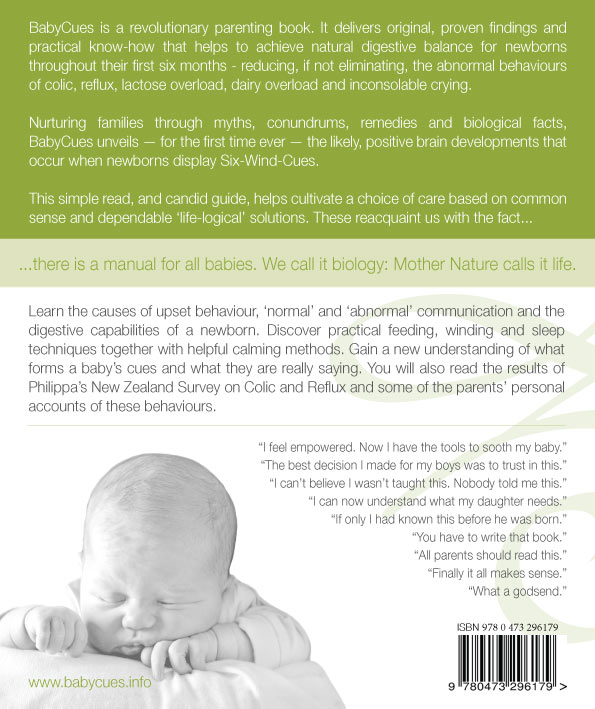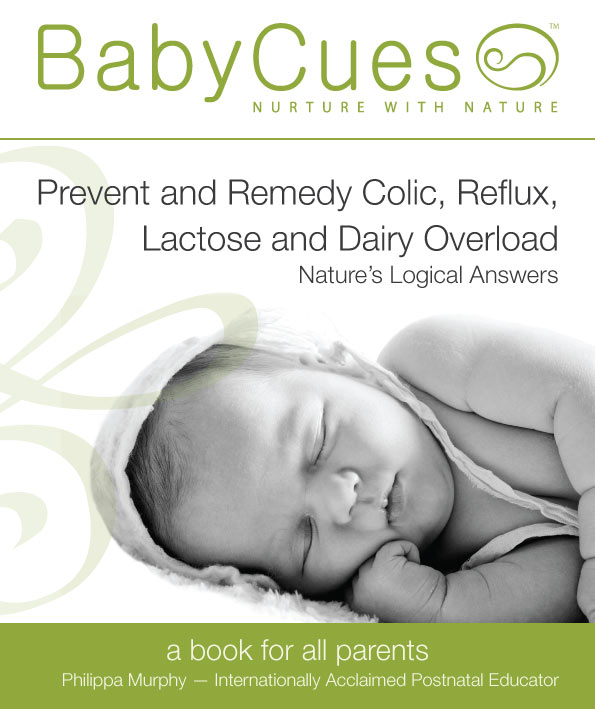Cluster Feeding Causes Colic and Reflux

Cluster feeding – what a conundrum it is for our newborns and for our breastfeeding mothers. Often the statement that comes with cluster feeding, or just having a baby really, is that every baby is different, and to a certain degree this is of course true. But fundamentally we are all human and from that perspective, the perspective of biology, we can form a firm foundation to base some of our practical nurturing of baby’s. From that stand point, we can then consider any sensitivities or conditions that may run in the family for each individual baby. This is the perspective I come from with my work and when I talk about the why and why not of cluster feeding.
Kelly Bonyata, BS and IBCLC from the ever popular website KellyMom, says this, “Cluster feeding, also called bunch feeding, is when babies space feed closer together at certain times of the day and go longer between feedings at other times. This is very common, and often occurs in the evenings. It’s often – but not always – followed by a longer sleep period than usual: baby may be ‘tanking up’ before a long sleep. For example, you baby may nurse every hour (or even constantly) between 6 and 10pm, then have a longish stretch of sleep at night – baby may even sleep all night.” She goes onto say that “cluster feeding often coincides with baby’s fussy time. Baby will nurse a few times, pull off, fuss/cry, nurse a few minutes, pull off, fuss/cry…. On and on… for hours. This behaviour is normal!”
Get the help you need
Hailed as a game changer, life-saver and a must read from parents and postnatal professionals, this self-help book truly has the answers that NATURALLY prevent and heal the symptoms of colic, reflux, silent reflux, the witching hour and lactose and dairy overload - aka Digestive Overload, the true cause of these symptoms.


- nurture your child's digestive system
- Burp your baby to comfort
- Understand their Six-Wind-Cues
- Calm baby with techniques that work


LEARN HOW TO
- nurture your child's digestive system
- Burp your baby to comfort
- Understand their Six-Wind-Cues
- Calm baby with techniques that work
That last statement and much of what she and many other breastfeeding advocates believe and teach makes me want to cry for our newborns. Babies don’t ‘space feed closer together at certain times of the day’ we space feed them. I can hear some of you say, but they do as they tell us by their cues that they are hungry again. Cues like rooting, sucking on hands, nuzzling the breast, crying, screaming, and not wanting to be put down. These can indeed be hunger cues, and the common belief is that by cluster feeding you are ‘cue feeding,’ as some define it, which sounds great right. We all want to nurture alongside what our newborn is telling us. To offer responsive care that fulfills their needs. But what if those cues are being mis-taught? What if we have become blind to what the cues truly mean because we have become so conditioned to believe that they are always hunger cues, when what some of them really are, are cues that the baby is feeling uncomfortable in the digestive tract (not from hunger) with cluster feeding being one of the contributing factors. What a sad predicament for our newborns to have to live in that cycle of teaching. Sadly, this is what is happening.
While rooting to suck can mean hunger it doesn’t necessarily denote that. Crying, screaming and not liking to be put down are not hunger cues when a baby is having ‘good’ weight gains, and I find it deeply, deeply heart wrenching that our Western society believes that screaming is normal! Thankfully though, we can change this by changing our belief and care responses because at these times the baby is often screaming because they are uncomfortable and sometimes, they are saying, ‘I am extremely uncomfortable’ and no amount of feeding, jiggling, pacing or rocking will stop this, especially when cluster feeding is happening.

One of the instinctive reasons a baby roots to suck is to enable relaxation when they feel discomfort in the digestive tract. Sucking is nature’s gift and their natural medicine to help them obtain calm. But when we keep offering the breast with this cue, and believe it’s a hunger sign only, or believe more milk (tanking-up - such an awful expression for newborns) will make them comfortable and ‘sleep longer’, we can overload the stomach, which places further pressure on the child’s digestive organs, creating pain. Thus cluster feeding actually contributes to the upset behaviours that the parents are trying to alleviate through more cluster feeding. We only need to explore the well-known research around a newborns digestive biology to know that this is what is happening. I will talk about this soon. Firstly I’d like to share some common care practice scenarios involving cluster feeding that I see at my BabyCues Clinic.
Common in-clinic scenarios
Many of the parents that have a consultation with me are in survival mode and have either started caring for their baby by the widely recommended feeding patterns of every 1-3 hours and cluster feeding during the evening, or any time of the day for that matter. Alternatively they have resorted to cluster feeding their baby because they are only sleeping for short periods during the day (20 minutes to one hour), they are arching backwards, pedalling legs, looking to suck a lot, bopping on and off the breast during feeding or gulping down their bottle with some having, ‘bottle aversion.’
Hiccups are often happening a lot in the first few months, baby’s stomach gurgles and may be bloated and hard, and bowel motions can be explosive and green, or mustard yellow with deposits amongst it that look a little like sesame seeds – not normal. Some babies have been given the diagnosis of colic, reflux and/or silent reflux, lactose ‘intolerance’ and dairy ‘intolerance’ – or what I call Digestive Overload, the cause of these behaviours.
When asked about sleep many say, “He sleeps well at night but not during the day” or more specifically, “she tends to at night of 3-4 hours and then I’m lucky to get her to do another hour from then for the whole day.” In these scenarios baby is generally having the longer stretches of sleep out of exhaustion from not sleeping well during the day. All babies, up until around 7-9 months require around five hours of sleep during the day and ideally these would be in a couple of two hour blocks, and by a day I mean from say 6am-6pm or 7am-7pm. The scenario of little sleep during the day is largely caused by the cluster feeding having detrimental effects on the digestive tract, and even more so if the cluster feeding, or frequent feeding keeps happening through the day - I have named this the Common Cycle of Digestive Overload. Other contributing factors can be an overload of trapped air in the digestive tract, constipation (often caused by overfeeding), breastfeeding diet, or formula choice, and tongue or lip tie among other things.
Another common scenario with cluster feeding is the situation where baby is putting on ‘good weight.’ By that I mean over 220 grams over seven days, which sounds good, right. Wrong. These kind of weight gains are symptomatic of Digestive Overload and they are often seen in the newborns that I see. Sometimes the large gains were in the first few weeks, or months of life and now the infant is sensitive in the digestive tract, or alternatively it is happening when I meet the family in the first few weeks or months of life. This kind of gain will have the baby looking to suck more often because they are being overloaded with food, which of course the mother understandably offers, given what is largely taught, which again contributes to the pain. For the record, a healthy weight gain is 20-28grams (0.7-0.9 ozs) a day.

The research behind ‘why’ cluster feeding is said to be normal?
The first time that I was truly drawn to the lack of research that actually supports cluster feeding as a healthy care practice was when I was invited to join Sam Marsh at Auckland University, to be one of the consultants on her two year study on childhood obesity for 0-5 year olds, with me focusing on the 0-1 age group. Sam said to me, ‘I have been searching everywhere for research that categorically shows cluster feeding to be a normal practice and healthy for babies. But I can’t find any.’ Not that I can’t find much, I can’t find any! Of course, this lead me to dig a little deeper.
So after chatting with a local midwife that I hold in high regard for her knowledge and expertise, she sent me a link to an article1 that cited some of the prominent and greatly used research to support the practice of cluster feeding. So this is what I have chosen to spend some time going over with you.
Research and statements made in the article
Study and statement one
"Frequent feedings reduce the time it takes for a mother's milk to come in. In one study, moms who breastfed newborns every two hours began lactating eat least 24 hours earlier than did moms who breastfed every four hours (Salariya et al 1978)."2
When we look at this research it is a healthy number for a study group, 111 first time mothers. “They were broken into four groups matched for age and social class. Two groups had the baby put to the breast within 10 min of delivery and the other two began breast-feeding 4--6 h after delivery. One of each pair of groups fed 2-hourly and the other 4-hourly. Follow-up over 18 months suggested that both early initiation and increased frequency of breast-feeding extended the nursing period, the former having the greater effect. 2-hourly feeding induced lactation at least 24 h earlier than did 4-hourly feeding.”
Firstly there are a lot of variables to be considered over a 18 month period so I personally believe it’s a bit of a reach to state that the 2 hourly feeding increased the nursing period. Secondly, feeding 3-4 hourly in the first 24 hours may be more beneficial as this is actually closer to working alongside the newborns natural digestive function, which you will learn about soon, while giving Mum the necessary rest to recoup, and we all know that rest increases supply. You will also see that the next piece of research I talk about, showed feeding seven times a day brings about sufficient milk to feed baby. Thus providing a feed closer to 3 ½ hourly in the first 24 hour period would work just as well, while having the advantage of more recuperation time for baby and mum, along with less agitation to the nipple as they adjust.
Study and statement two
"Frequent breastfeeds increase a mother's prolactin levels, and high prolactin levels are needed to establish an adequate milk supply. In a U.S. study, breastfeeding frequency of about 10 times a day (range: 7-13 times a day) was associated with sufficient milk (de Carvalo et al 1982)."3
Reading up on the de Carvalo et al 1982 study we actually find that the other group that was feeding on a 3-4 hourly schedule also produced sufficient milk. In fact, when we look at the amount the babies took on day 15 (725 v 502 mL/24 h) the 502 mls from 3-4 hourly feeding is actually perfect given the size of a babies stomach at that age and the way milk is digested in the stomach, which I have outlined below. The 725mls is around 200mls to much for a baby at that age and this kind of amount is what starts those uncomfortable behaviours at around 2-3 weeks, when baby starts to wake up to the world and the discomfort in their body. Also, the study says 7 times a day is associated with sufficient milk supply – something that I totally support parents to provide in the first 24-48 hours and if baby has low birth weight. It’s when we go over this that we can begin to push the baby’s digestive system to much and even in the circumstances of low weight gain. There was a recent New Zealand study by Professor Barry Taylor that suggested 'child obesity can be tackled by simple sleep interventions'.4 By nurturing a baby alongside their biology they gain more developmental sleep. I helped a family in Australia recently where at one stage the wee girl was sleeping for short periods, wasn't putting on good weight but the mother was feeding often. We reduced her feeding, which then reinstated her sleep a little more, because she was no longer overloaded, and she started to put on weight. Sleep and feeding both aid weight gain.
Study and statement three
"Newborns are more likely to thrive when they are fed approximately 8-12 times every 24 hours. Newborns fed this often in the first weeks of life tend to show greater weight gain at 15 days (De Carvalho et al 1983)."
We have discussed the research by De Carvalho above about the weight gain, so let’s look at the first part of that statement which comes from the Work Group Breastfeeding 1997, which states, “Newborns should be nursed approximately 8 to 12 times every 24 hours until satiety, usually 10 to 15 minutes on each breast”.5 I love the recommendation of 10-15 minutes as this tends be as along as a baby needs on the breast to feel full, and of course this does depend on each baby's strength of suck so some may need around 20 minutes but any longer and generally we start to overload the stomach and digestive system. This statement is based on another of De Carvalho’s research when he studied the ‘Frequency of breastfeeding and serum bilirubin concentration’ in 1982. The conclusion said this, ‘ The results of this investigation suggest that present breast-feeding policies that reduce or limit the number of feedings may interfere with the normal processes that eliminate bilirubin from the newborn infant.’6 But then a later study in 1994 concluded that, “There was no correlation between the frequency of breast-feeding and the serum bilirubin level.”7 So there is obviously a little ambiguity around the statement that newborns should be fed approximately 8-12 hours every 24 hours.
It’s also interesting to note that the weight gain of the 3-4 hourly feeders is perfect – 23 grams a day, whereas the frequent feeders put on 37.4 grams a day. While some health professionals would say that is fine and pat Mums on the back, this is above World Health Organisation (WHO) Child Growth Standards8 of 5–7oz per week (141.74–198.44g), so 28 grams a day at the greater amount. In my clinical practice I have newborns putting putting on 35-57 grams a day and no one has said that this is a problem. When in actual fact this kind of weight gain can create the need to suck, and therefore have parents cluster feeding because of the discomfort the baby feels from the overfeeding. That overfeeding then places stresses on their body at such a significant time of growth.

As for the claim that frequent breastfeeds increase a mother's prolactin levels, and high prolactin levels are needed to establish an adequate milk supply. The part about high prolactin levels is of course true but the research actually reads that ‘the concentration of prolactin in the plasma increases in response to nipple stimulation (not frequent breastfeeds). This response has led to the assumption that prolactin influences the rate of milk synthesis. We found no relationship between the concentration of prolactin in the plasma and the rate of milk synthesis (production) in either the short or long term.' 9
This particular article also states that “the World Health Organisation have stated that a newborn feeding schedule is “clearly harmful or ineffective”.” The article has no reference to verify this statement but this is what WHO and UNICEF do say and recommend about feeding:
- Initiation of breastfeeding within the first hour of life
- Exclusive breastfeeding – that is the infant only receives breast milk without any additional food or drink, not even water
- Breastfeeding on demand – that is as often as the child wants, day and night
- No use of bottles, teats or pacifiers
'Breastfeeding on demand' is completely what I teach. Demand is of course shown to us by a newborns cues and with these currently being misinterpreted and taught, my form of ‘demand care’ takes on a slightly different flow than what currently exists – one that does not include cluster feeding, or feeding 8-12 times a day. Nor does it include a strict routine. Instead it sits firmly with WHO and UNICEF's recommendations for breastfeeding on demand, offering flexible guidelines that enables the parent to see and understand their newborns daily flow, while responsively nurturing their baby within nature’s digestive gifts at different ages. Along with their full array of cues, inclusive of their Six-Wind-Cues – my discovery of a universal newborn language that is greatly connected to the moment of trapped air in the body.
I call this somewhat flexible kind of care Bio-logical Care (life-logical care) and chose to create another name for this form of care to help move us away from the strict regimented routine, cluster feeding and overfeeding that is largely provided in our times. Moving us more toward the natural, holistic rhythm of nature’s early human functions and its universal gifts of communication. So let’s look closer at the digestive biology that I have referred to. The ‘why not’ research of cluster feeding if you like. I’m going to do that by listing the aspects of newborn digestion (newborn to 6 months) that don’t make cluster feeding a healthy choice for our children.
Please note: the article referenced above has more research that you may like to delve into. I have done this, but if I continue I will begin to write a small book.
The basic biology behind the ‘why not’ of cluster feed
Lactose Overload
Frequent feeding and cluster feeding often has the baby feeding from both breasts in quick succession. This feeding practice can heighten the levels of foremilk that the baby receives, or in other words, heighten the intake of lactose (sugar) since this is predominantly what foremilk is. When a baby receives heightened levels of lactose the lactase enzyme, which is made by the villi in the intestinal wall and helps babies and infants to breakdown lactose, cannot keep up. The overabundant lactose is then fermented in the colon, causing more gas and cramping.
Gas that then travels through the digestive tract where, Joy Anderson - BSc(Nutrition), PostgradDipDiet, APD, IBCLC, ABA Breastfeeding Counsellor says it forms “The acid stools often cause a nappy rash. Gas and fluid build-up cause tummy pain and the baby 'acts hungry' (wants to suck, is unsettled, draws up his legs, screams). Sucking is the best comfort he knows and also helps move the gas along the bowel. This tends to ease the pain temporarily and may result in wind and stool being passed. Since the baby indicates that he wants to suck at the breast, his mother, logically, feeds him again. Sometimes it is the only way to comfort him. Unfortunately another large feed on top of the earlier one hurries the system further and results in more gas and fluid accumulation. The milk seems almost literally to 'go in one end and out the other'.”10
Lactose Overload can also create unsettled sleep patterns, or short sleep cycles at some point in each 24 hour period – please note that by short sleep cycles I mean sleeps that regularly last for 10-45 minutes or maybe an hour with baby finally having a longer stretch somewhere in the 24 hour period.
While lengthening the time between feeds can stop lactose overload, feeding from one side in one sitting can also be helpful. Thus baby gets a healthy amount of lactose and fat and, if you feel baby may need more within thirty minutes of starting the feed, then place them back on that side you have fed off so they can receive even more of the good fat for weight gain.
Size of stomach
You may have heard it said that ‘you can’t overfeed a breastfed baby.’ Well, quite simply, you can. It’s logical right. All humans can overfeed. Especially a baby because for them, when anything touches the rooting reflex zone around their mouth and cheeks, they will look to suck, whether they are hungry or not. Babies and infants, up until a certain age, don’t have the capability to know when they are full. Knowing and making those decisions is one of our jobs as parents.
It also takes around twenty minutes before the brain tells the child their bodies are full. Zane Andrews -- an associate professor of physiology and a neuroscientist at Monash University who studies how food (and lack of food) affects the brain states “Generally there is a delay -- a disconnect between when you put food in (and your brain goes 'this is nice') to when it gets to your gut (and your gut goes 'hang on, brain, you better slow that down, mate'). There is a twenty minute window, generally speaking, where you're not getting some of those feedback signals.”11 So cluster feeding completely overrides that natural mechanism.
Also, a newborns stomach does not stretch and it is obviously only so big so cluster feeding has a baby taking in more than the stomach can hold, which can cause discomfort and reflux symptoms as the milk obviously only has two ways to go. To find out how much a child can hold in the stomach up until one year of age click here. The amounts may surprise you, especially the last one.
Newborn digestive function
For newborns aged one to three months it has been reported to take, on average, eight-and-a-half hours for milk to travel from the mouth through the digestive tract and onto a bowel motion (known as transit time).12 On average it can take four to five hours for milk to move from the stomach in a healthy manner, meaning with all the nutrients broken down appropriately (not that you would leave your baby without a feed for 5 hours in the first 3-4 months of life). So this biological fact alone tells us that the taught breastfeeding belief that you have to feed a baby often because they have small stomachs, can’t actually be based on biology.
Add to this that according to research "gastric (stomach) emptying and transit times are naturally delayed for neonates."13 Furthermore, "initial digestion within the stomach is especially important for milk fat because milk fat droplets are not a good substance for pancreatic lipase, consequently high fat concentration in gastric contents delays gastric emptying."14 Combine this knowledge with the research that shows us that "milk feeds override the intrinsic, fasting, motor activity of the colon, and induce regular defecation at a frequency determined directly by the volume of the products of digestion that reach the rectum.”15
In other words, when we feed a baby within 3½ hours (cluster feed or frequent feeding), we automatically push the food that is already in the stomach onward to the duodenum and onto the large bowel before the stomach enzymes and acid have processed the milk fully. This places other organs under unnecessary pressure as they struggle with unnatural processes. For example: fat globules moving through the intestines from not allowing the natural delay mechanism time to work, or lactose in the duodenum which ferments and causes more gas.

When this is done on a continual basis throughout the day, along with baby not burping enough for their age, the baby finally reaches late afternoon to evening feeling highly uncomfortable – with this time often labelled as the 'witching hour', while being taught that it is normal. It is not normal! Again, this behaviour has the baby looking to suck for comfort. Sometimes furiously searching, but as I said earlier, this is all too often read and taught as a hunger cue, so mum understandably feeds while unknowingly contributing to behaviours.
The frequent dirty nappies is another aspect that I see in my own clinical research. Whenever I nurture a baby back to biological levels of feeding, their bowels are reduced to one or two a day, they aren't as explosive, they are not yellow/mustard in colour but more golden/brown, and they don't have seed like deposits in them, which I believe are caused by the abnormal process of undigested fat globules – I will be finding this out for sure in the future.
In the early months crying for five or ten minutes at a time is normal, but crying continuously for half an hour or longer while exhibiting obvious pain, pedalling legs, arching backwards while looking to suck a lot, this is not normal. This is a baby in pain and my work proves it is avoidable pain.
Summary
Responsive feeding, cue feeding, is about being responsive to a newborns cues and when these are fully known, along with the basic knowledge of a newborns digestive capabilities and capacities, cluster feeding just doesn’t happen.
I am all for ‘demand feeding’ and ‘cue lead feeding’ and a part of this is, of course knowing what the cues of your baby mean. It is a fact that currently some of these cues are largely being mistaught, and when completely understood and responded to in the appropriate way, the baby’s feeds naturally have more time between them. The parents I teach understand that their baby is not necessarily communicating hunger, while learning how to respond more succinctly to the cues that they are communicating. So yes, lets ‘cue feed’ let’s ‘demand feed’ but let’s skill ourselves appropriately with what those cues truly mean, and when we marry the knowledge we know about the digestive function, well it all highlights the ‘why not’ of cluster feeding.
Bio-logical Care is not only logical, responsive, respectful and intimate. It supports healthy digestive function for your baby, healthy breastfeeding outcomes, along with parenting confidence and attachment, because parents learn how to knowingly respond to their baby’s full array of cues in each moment with the solid, but simple knowledge of their digestive biology aiding their decisions. It stands to reason then that Bio-logical Care also supports social, emotional and cognitive development for baby’s and all at a time of their exponential growth.
1 http://www.parentingscience.com/newborn-feeding-schedule.html
2 https://www.ncbi.nlm.nih.gov/pubmed/82695
3 https://www.ncbi.nlm.nih.gov/pubmed/6889034
4 http://pediatrics.aappublications.org/content/139/3/e20162037
5 http://pediatrics.aappublications.org/content/100/6/1035#ref-87
6 https://www.ncbi.nlm.nih.gov/pubmed/7102626
7 https://www.ncbi.nlm.nih.gov/pubmed/8141220
8 http://www.who.int/childgrowth/en/
9 https://www.ncbi.nlm.nih.gov/pubmed/8960706
10 https://www.breastfeeding.asn.au/bfinfo/lactose-overload-babies
11 http://www.huffingtonpost.com.au/2016/11/09/we-found-out-if-it-really-takes-20-minutes-to-feel-full_a_21602736/
12 Nyhan WL., Stool frequency of normal infants in the first week of life. Pediatrics 1952:10:414-2
13 The Anatomical Basis of Clinical Practice, Gray's Anatomy 39th Edition
14 Hamosh, M., Scanlon, JW., Ganot, D., Likel, M., Scanlon, K., and Hamosh, P. Fat Digestion in the Newborn — Characterisation of lipase in gastric aspirates of premature and term infants. www.ncbi.nlm.nih.gov/pubmed/7204558
15 Weaver, LT., Lucas, A. Development of bowel habit in preterm infants. Archives of Disease in Childhood 1993; 68: 317-320





